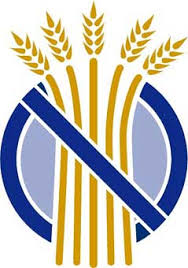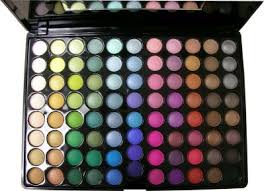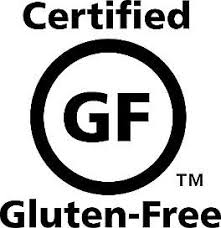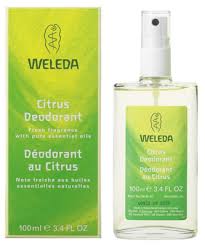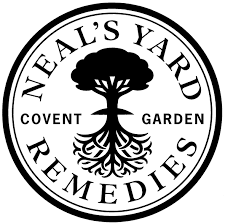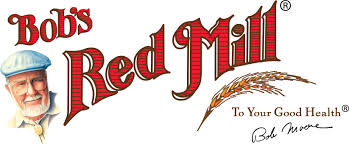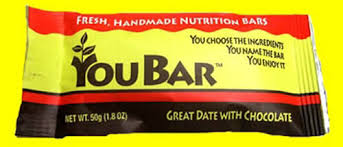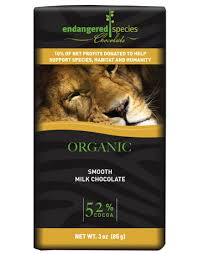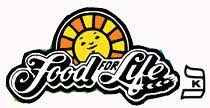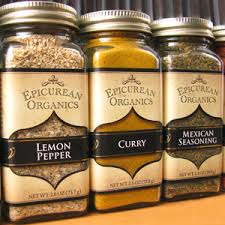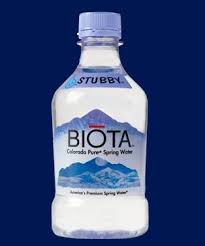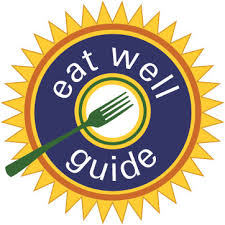 Gluten-free cupcakes by traceytakesphotos (flickr.com)
Gluten-free cupcakes by traceytakesphotos (flickr.com)CELIAC DISEASE is an inherited, autoimmune disease in which the lining of the small intestine is damaged from eating gluten and other proteins found in wheat, barley, rye, and possibly oats.
Alternative names: SPRUE , NONTROPICAL SPRUE , GLUTEN INTOLERANCE , GLUTEN-SENSITIVE ENTEROPATHY.
The exact CAUSE of celiac disease is unknown. The intestines contain projections (called villi) that absorb nutrients. In undiagnosed or untreated celiac disease , these villi become flattened, and the ability to absorb nutrients properly is altered.
The disease can develop at any point in life, from infancy to late adulthood.
Those with a family member with celiac disease are at greater risk for developing the disease. The disorder is most common in Caucasians and those of European ancestry. Women are affected more commonly than men.
There are numerous DISEASES & CONDITIONS associated with celiac disease , including:
Anemia
Autoimmune disorders such as rheumatoid arthritis and systemic lupus erythematosus
Certain types of intestinal cancer
Dermatitis herpetiformis
Down syndrome
Lactose intolerance
Miscarriage or unexplained infertility
Neurological conditions
Osteoporosis or osteopenia
Thyroid disease
Type 1 diabetes
A partial listing of GASTROINTESTINAL SYMPTOMS:
Abdominal pain
Abdominal distention , bloating , gas, indigestion
Constipation
Decreased appetite (may also be increased or unchanged)
Diarrhea , chronic or occasional
Lactose intolerance (common upon diagnosis, usually goes away following treatment)
Nausea and vomiting
Stools that float, are foul smelling, bloody , or “fatty”
Unexplained weight loss (although people can be overweight or of normal weight upon diagnosis)
A partial listing of NON-INTESTINAL SYMPTOMS:
Anemia (low blood count)
Bone and joint pain
Bone disease (osteoporosis, kyphoscoliosis, fracture)
Breathlessness (due to anemia)
Bruising easily
Dental enamel defects and discoloration
Depression
Fatigue
Growth delay in children
Hair loss
Hypoglycemia (low blood sugar)
Irritability and behavioral changes
Malnutrition
Mouth ulcers
Muscle cramps
Nosebleed
Seizures
Short stature, unexplained
Skin disorders (dermatitis herpetiformis)
Swelling, general or abdominal
Vitamin or mineral deficiency, single or multiple nutrient (for example, iron, folate, vitamin K)
TREATMENT
You must follow a life-long gluten-free diet. This allows the intestinal villi to heal. Foods, beverages, and medications that contain wheat, barley, rye, and possibly oats should be eliminated completely. You must read food and medication labels carefully to look for hidden sources of these grains and their derivatives. Since wheat and barley grains are found abundantly in the American diet, keeping to this diet is challenging. With education and planning, you will achieve the goal of healing .
Vitamin and mineral supplements may be prescribed to correct nutritional deficiencies.
Upon diagnosis , seek consultation from a registered dietitian with a specialty in celiac disease and the gluten-free diet. A support group may also help you cope with the disease and diet.
PROGNOSIS
Removing all damaging grains from the diet is the most important measure you can take to become healthy. If you follow the diet strictly, you can expect to lead a long, healthy life -- if permanent damage did not occur before diagnosis.
POSSIBLE COMPLICATIONS
The gluten-free diet must be carefully and continuously followed. When untreated, the disease can cause life-threatening complications. A delayed diagnosis or non-compliance with the diet places you at risk for developing associated conditions such as infertility , miscarriage , osteoporosis , fractures, certain types of intestinal cancer, or other autoimmune disorders.
PREVENTION
Because the exact cause is unknown, there is no known way to prevent the development of celiac disease . However, being aware of the risk factors (such as having a family member with the disorder) may increase your chances of early diagnosis , treatment, and a long, healthy life.
Celiac Disease
GLUTEN
Gluten is the elastic, rubbery protein present in wheat, rye, barley and to a lesser degree in oats. It binds the dough in foods such as bread and other baked goods. It contributes to spongy consistency. Rice and maize do not contain gluten.
However, gluten is only one protein found in wheat, rye and barley. These foods, like all other foods, contain a number of discreet proteins that all can result in adverse reactions, including allergies.
For example, wheat protein comprises 4 main groups of proteins: water-soluble, salt-soluble, alcohol-soluble and alcohol-insoluble. The major proteins in wheat-albumin, globulin, gliadin and glutenin (gluten)-vary in proportion according to the type of wheat.
Gluten
AVOID
Barley
Malt Vinegar
Rye
Wheat
The following terms found on FOOD LABELS may mean that there is gluten in the product:
>Hydrolyzed Vegetable Protein (HVP), unless made from soy or corn
>Flour or Cereal products, unless made with pure rice flour, corn flour, potato flour, or soy flour
>Vegetable Protein unless made from soy or corn
>Malt or Malt Flavoring unless derived from corn
>Modified Starch or Modified Food Starch unless arrowroot, corn, potato, tapioca, waxy maize, or maize is used
>Vegetable Gum unless vegetable gums are carob bean gum, locust bean gum, cellulose gum, guar gum, gum arabic, gum aracia, gum tragacanth, xanthan gum, or vegetable starch
>Soy Sauce or Soy Sauce Solids unless you know they do not contain wheat
Any of the following words on FOOD LABELS usually means that a grain containing gluten has been used:
stabilizer
starch
flavoring
emulsifier
hydrolyzed plant protein
Gluten-Free Diet Chart
AVOID: When eating at a restaurant: Breaded foods / Creamed foods / Meatloaf & gravies
Gluten-Free Diet
FYI
Oats is a grain the merits special attention. Oats are believed safe in patients with celiac disease although this was not always the case. The problem with oat products is not the grain but rather the manufacturing process. When oats are processed in the same facilities as wheat, contamination can occur even with the best cleaning protocol. Oat products can now be found that are not cross contaminated. These can be tried after an initial period of 6 months to see if they can be tolerated. Most, but not all patients can tolerate pure oat products.
Foods may also contain less obvious sources of gluten as there is no requirement for manufacturers to specify the composition of ingredients that contribute less than 10% of a food. For example, it may be difficult to determine the origin of a soy sauce included as an ingredient in a commercial marinade. This means that gluten may be carried over into the marinade via the soy sauce. It is best to contact the manufacturer directly to determine the source of these ingredients.
It is essential that all food labels be rechecked regularly since the composition may change. Avoid any food that is doubtful.
Always check that medications and vitamins are gluten free.
Dairy foods may not be tolerated when someone with celiac disease has active symptoms, since lactose intolerance frequently develops. However, this is due to the lactose sugar in the dairy foods, rather than the proteins, which can cause milk allergy.
Even if there are no obvious symptoms, celiac sprue can cause serious vitamin and nutritional deficiencies, since the intestines may not be able to absorb important nutrients if gluten is being eaten.
Rates of certain cancers of the gastrointestinal tract are much higher in people with celiac sprue, and there is evidence that this risk is decreased with a gluten-free diet.
Mothers with untreated celiac disease are at increased risk for having a low birth weight baby.
Since bone loss is a common problem in people with celiac sprue (due in part to vitamin D deficiency), frequent monitoring with bone density scans is recommended.
Manufacturers are known to change ingredients without warning. This may be due to changes in the recipe, changes in the ingredients supplied to the manufacturer, or changes in the production & manufacturing methods, including cross contamination concerns.
Certain unacceptable ingredients may be hidden under the name of natural flavorings.
Modified food starch is a vague term which does not indicate the source of the starch (wheat or corn).
One way to determine if gluten is causing problems is to avoid it strictly for several weeks to see if any change occurs. Another method is to have a blood sample taken & tested for gluten antibodies. While a blood test for wheat allergy could be negative, there may be reactivity to digestive by-products of wheat.
The only treatment for celiac disease is to follow a gluten-free diet. For most people, following this diet will stop symptoms, heal existing intestinal damage, and prevent further damage. Improvements begin within days of starting the diet, and the small intestine is usually completely healed in 3 to 6 months. Healing may take up to 2 years for older adults.
If you would like to make something very high in fiber with an incredibly low glycemic index you will want to use 100% coconut flour. To do this we recommend you purchase the book Cooking With Coconut Flour by Dr. Bruce Fife. The entire book contains delicious recipes that use solely coconut fiber for the flour. These recipes use eggs for the binder or "glue" and they are very low in sugar or sweeteners. These recipes are great for diabetics, people with gluten allergies, and people with Candida and "leaky gut" issues. Coconut fiber/flour is an excellent product to use to promote healthy intestinal tract.
Dermatitis herpetiformis (DH) is a severe itchy, blistering skin disease caused by gluten intolerance. DH is related to celiac disease since both are autoimmune disorders caused by gluten intolerance, but they are separate diseases. The rash usually occurs on the elbows, knees, and buttocks.
1 out of 133 people in the United States is diagnosed with Celiac Disease.
Coeliac Disease is one of the commonest life-long disorders in Western countries. CD is frequently under-diagnosed, particularly in adults, who may present with subtle symptoms. In some countries the incidence is as high as 1 in 200 (Sweden) or 1 in 10,000 (Denmark).
Individuals with Celiac Disease are often mistakenly diagnosed as having Irritable Bowel Syndrome.
Medication is ineffective in treating Celiac Disease. The only treatment available is the complete removal of gluten from the diet.
A variety of reactions to proteins in cereals is possible. These include allergy and Coeliac disease. Adverse reactions may be mild to life-threatening, short-term to life-long. A correct diagnosis must be made as the treatment, dietary avoidance, is often very difficult and if incorrectly applied can lead to vitamin deficiencies or malnutrition.
MORE LINKS
Gluten-Free Diet (The Analyst)
Celiac Disease & Gluten-Free Forum
Wheat Allergy or Gluten Intolerance?The Gluten-Free Guide to Eating
Breaking the Vicious Cycle
Customer review: "And contrary to what some reviewers have written here, this diet is not about what you should eat, but about *what not to eat* in order to get well. There's plenty of choice for all types of foods, for a well balanced and healthy diet."
Cooking With Coconut Flour
Customer Review: "This book uses coconut flour and the recipes are moist and springy and as close to wheat-like as possible. Also, the baked goods stay moist for days."
How to Start Living Gluten-Free
